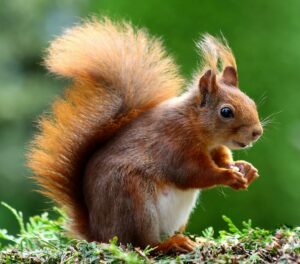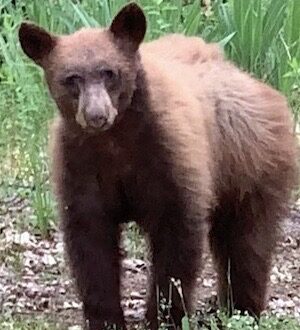Animal Intuition
January 13, 2025
/
 Animal intuition refers to the instinctive, often unexplainable ability of animals to sense or react to events, emotions, or environmental changes without apparent cues. It’s a fascinating aspect of animal behavior that has intrigued scientists, pet owners, and wildlife enthusiasts alike. Here’s an overview of the concept:
Animal intuition refers to the instinctive, often unexplainable ability of animals to sense or react to events, emotions, or environmental changes without apparent cues. It’s a fascinating aspect of animal behavior that has intrigued scientists, pet owners, and wildlife enthusiasts alike. Here’s an overview of the concept:
Key Characteristics of Animal Intuition
- Heightened Senses:
- Animals have finely tuned senses that enable them to detect subtle changes in their surroundings, such as vibrations, scents, or sounds that humans might miss.
- For example, dogs can hear frequencies beyond human range and detect minute chemical changes in a person’s body.
- Behavioral Instincts:
- Intuition in animals often manifests as instinctual behavior, such as migration, hibernation, or avoiding predators.
- Birds, for instance, instinctively navigate vast distances during migration using Earth’s magnetic fields.
- Emotional Sensitivity:
- Many animals, especially domesticated ones, appear to sense human emotions, such as fear, sadness, or joy. Dogs and cats, for example, often comfort their owners when they sense distress.
- Predictive Abilities:
- Some animals seem to predict natural disasters like earthquakes or tsunamis. This behavior might stem from their ability to detect subtle environmental changes, such as ground vibrations or shifts in air pressure.
- Social Intuition:
- Animals living in social groups display intuitive behavior to maintain harmony, detect threats, or establish hierarchies. Elephants, for example, show complex emotional awareness and can sense distress in their herd.
Examples of Animal Intuition
- Dogs and Medical Detection: Dogs are trained to detect diseases like cancer, diabetes, or seizures by picking up on chemical changes in a person’s body.
- Earthquake Prediction: Cats, dogs, and even farm animals are often reported to act strangely before earthquakes, possibly sensing vibrations or changes in the environment.
- Homeless Pigeons’ Navigation: Pigeons have an innate ability to find their way home from great distances, likely using a combination of magnetic fields, landmarks, and celestial cues.
- Sharks and Electric Fields: Sharks can sense electric fields produced by the movement of prey, even if they’re buried under sand.
Scientific Exploration
While many aspects of animal intuition are still not fully understood, some explanations include:
- Biological adaptations, such as enhanced sensory organs.
- Evolutionary survival mechanisms that heighten an animal’s ability to react quickly to threats.
- Environmental attunement, allowing animals to pick up on subtle cues that humans may overlook.
Applications and Implications
Understanding animal intuition can help in:
- Disaster preparedness by observing animals’ predictive behaviors.
- Advancing medical detection methods using animals.
- Improving human-animal relationships by recognizing their emotional intelligence.
Animal intuition is a blend of innate abilities and evolved survival traits, showcasing the incredible adaptability and sensitivity of the animal kingdom.
4o
You May Also Like

Face to Face With My Power Animal: A Meeting of Souls
May 4, 2025